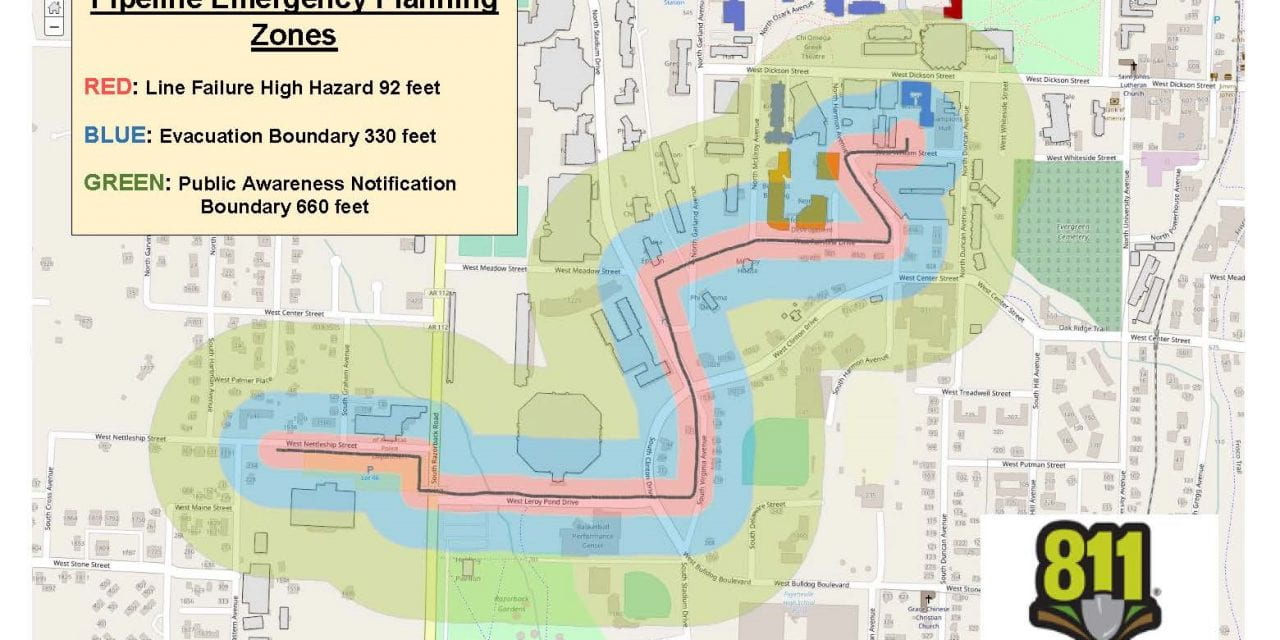The University of Arkansas owns and operates its own natural gas pipeline, which helps reduce the campus greenhouse gas footprint and allows us to meet sustainability objectives.
While pipelines are usually very safe, campus users should be aware of the location of the pipeline, how to recognize signs of a potential gas leak and what to do in the case of a pipeline emergency.
Recognizing a Natural Gas Leak
- Sight: In the case of a gas leak, look for dirt blowing into the air with chunks of pipe and debris lying around, fire coming from the ground or a large section of dead vegetation.
- Sound: Listen for a hissing noise that can range from sounding like air leaking from a tire to a loud roar.
- Smell: Natural gas has a chemical added to it that smells like rotten eggs, sulfur, or vinegar.
What To Do/Not Do In Case Of A Gas Leak
- Do not try to find the leak.
- Do not use your cell phone.
- Do not turn lights on or off.
- Do not create fire or cause sparks.
- Evacuate the area and tell others to do the same.
- When you’re a safe distance away, call 911.
For more information, please visit pipelinesafety.uark.edu.






Recent Comments